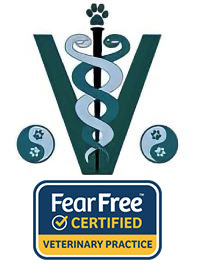Library
-
If well socialized from a young age and treated gently, hamsters are generally slow moving, reasonably easy to handle, and affectionate. Hamsters make good family pets but should never be left unsupervised with small children. Hamsters should have annual physical examinations and fecal tests for intestinal parasites.
-
Rats are extremely intelligent, inquisitive, interactive, and social. If well socialized from a young age and treated gently, they are easy to handle, affectionate, and rarely bite unless provoked. Rats generally make good family pets but should never be left unsupervised with small children. Rats live about 2 to 3 years. The incisors (front teeth) of all rodents grow continuously throughout the pet's life. Rats should be examined by a veterinarian at least once a year and twice a year as they get older.
-
Several species of snakes are commonly kept as pets, including king snakes, rat snakes, garter snakes, corn snakes, various pythons, and various boa constrictors. Young, captive-raised animals make the best pets. This handout discusses key features of snakes and how to choose a snake as a pet. Within one week of your purchase, your snake should be examined by a qualified reptile veterinarian.
-
Prairie dogs (most often black-tailed prairie dogs) are becoming popular as pets. Like all rodents, they have teeth that continually grow throughout life. They are active, playful and sturdy rodents and can make wonderful, affectionate pets if purchased young, socialized properly and given lots of attention.
-
Pet rodents, sometimes also referred to as pocket pets are very popular pets. Hamsters, rats, mice, gerbils, and guinea pigs are the most common rodents kept as pets. They make good first pets for young children and as a rule require minimal care.
-
The red-eared slider is probably the most popular pet aquatic turtle. They are semi-aquatic turtles, meaning they like to leave the water to bask in the sun. This article outlines general information about aquatic turtles, including how to choose a healthy turtle, what they like to eat, turtle anatomy, salmonella concerns, and recommended veterinary care.
-
Box turtles can make great pets if cared for properly. With proper diet and housing, captive box turtles usually live up to 20 years of age, but some have been reported to live 30–40 years. This article outlines some general information about box turtles, including how to choose a healthy turtle, turtle anatomy, salmonella concerns, and recommended veterinary care.
-
Guinea pigs live, on average, 5-6 years; although some can live to 8-10 years of age. Their teeth grow continuously, throughout life, and it is critical that they eat grass hay, such as Timothy hay, every day to help them wear down their teeth as they grow. Young guinea pigs display a unique behavior called popcorning when they are happy, in which they jump straight up in the air and let out squeals of delight. Guinea pigs reach sexual maturity at around 3-4 months of age; therefore, if young males and females are housed together, they should be separated by this age, otherwise they are likely to breed. The average gestation period for guinea pigs is 63 days. If gestation continues over 70 days, the guinea pig should be seen immediately by a veterinarian, and it is likely that the entire litter will be stillborn.
-
Oxazepam is given by mouth and is used off label to stimulate appetite and to treat behavior-related disorders. Give as directed by your veterinarian. Common side effects include sleepiness and drooling. Do not use in pets that are allergic to it or other benzodiazepines, nursing pets, or those that have glaucoma. If a negative reaction occurs, please call your veterinary office.
-
Oxytetracycline is an antimicrobial medication used to treat bacterial infections. It is used to treat infections in cats, dogs, and fish. It is used “off label” or “extra label” to treat bacterial infections in exotic animals. Oxytetracycline comes in oral tablet or compounded liquid forms.


